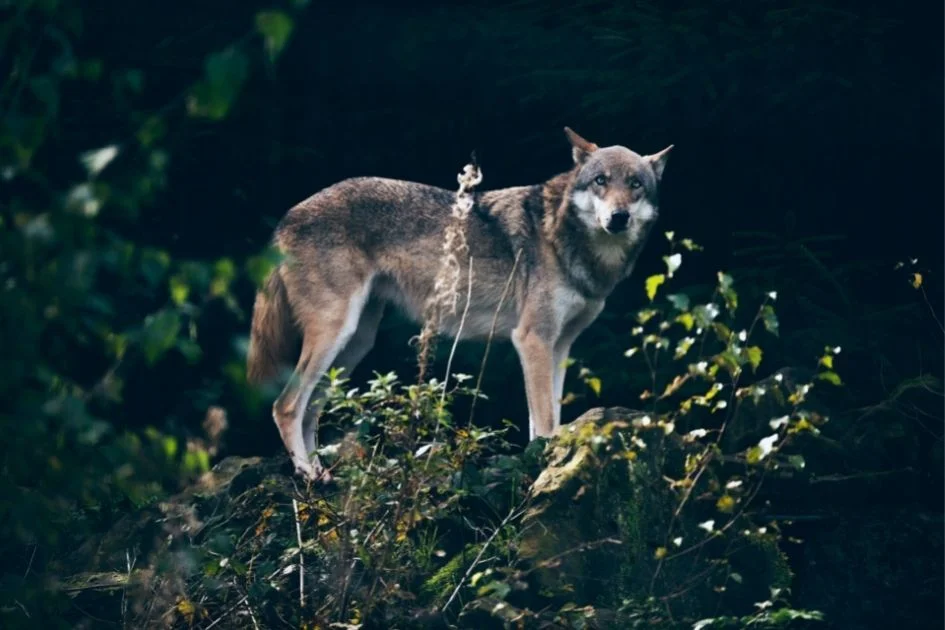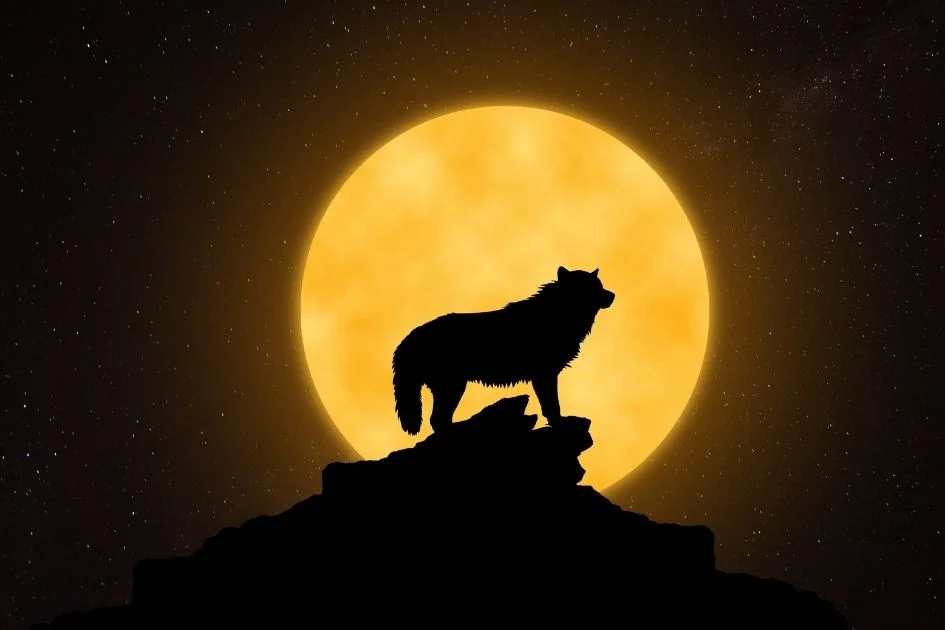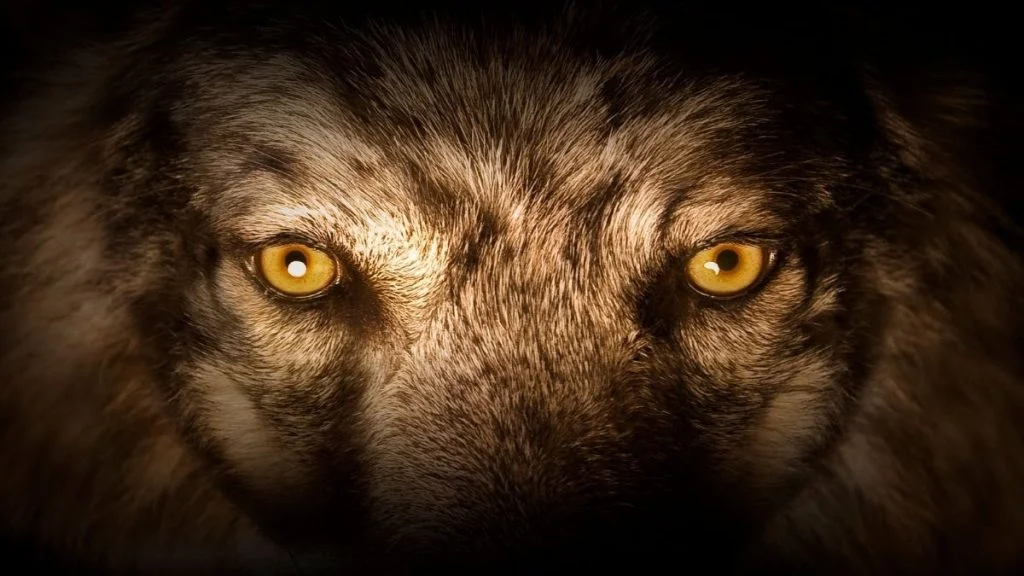Generally, wolves are crepuscular animals; this means that they are more agile and active at dusk and dawn.
Moreover, over time, most wolf hunt cases and sightings show that they are more active at night.
This brings up some questions about their eyesight, especially when they’re active at twilight or just before dawn. How well can wolves see in the dark?
Wolves have enhanced night vision, and only a few animals rival their ability to see in the dark. Compared to humans, they are in their own league.
However, like other canine species, their sight is also flawed. Wolves are partially color blinded and they find it hard to differentiate some colors.
Read on to learn more about the wolf eyes at night and how they see well in the dark.
Can Wolves See in the Dark?

Yes, wolves can see pretty well in the dark. These canines can see objects up to 75 feet away.
Complemented by their strong sense of smell, they are among the best hunters in the wild. Wolves also have a better vision than their canine kin, dogs, and the wild makes them twice as smart.
The positioning and structure of their eyes also help significantly in surveying a wide area in the dark.
How Do Wolves See in the Dark?

A wolf’s eyesight is quite peculiar during night hours. Like several other animals with good night vision, they possess a unique layer of reflective cells called tapetum lucidum behind the retina.
The role of the tapetum lucidum is to improve sight sensitivity when the light is low. It gives wolves the power to receive the slightest light reflections during the dark.
The layer behind the retina also has reflective properties. It reflects light through the same path in the wolf’s eyes.
While this aids in enhancing vision, it is why wolves’ eyes tend to glow in the dark.
Besides that, wolves also have two different types of cells in the eyes responsible for detecting light: cones and rods. The rods can detect brightness, while the cones make it easy for the animal to see color.
Working hand in hand with the tapetum lucidum, they help to ensure the enhanced sight of wolves.
Wolf Eyes at Night: Do Wolves Have Night Vision?

Night vision is the ability of an animal to clearly or partially see objects or living things at night.
Although night vision is most common among nocturnal animals, a few species, including wolves, are starting to pick up the trait during animal evolution.
A wolf possesses night vision that only a few animals can contend with. This helps them carry out certain night activities like mating, hunting, feeding, etc.
Over time, this ability has significantly improved because of the nocturnal behaviors of these animals.
How Far Can Wolves See at Night?

Although wolves see well at night, their vision is limited. A wolf will be only able to see things that are within a 75 feet radius. That said, it will be hard to spot prey 80 feet away unless it advances.
However, various factors can affect the range of vision for a wolf at night, such as lighting, health, age, and fog.
Health Problems
A sick wolf will find it hard to see as far as 75 feet. Some conditions that affect wolves are distemper, rabies, mange, oral papillomatosis, tularemia, Lyme disease, etc.
Generally, wolves can also see farther than 75 feet during a full moon. This is true, mainly because the moon emits enough light for sight.
Age
Another factor that can impact how far a wolf can see in the dark is age.
Due to underdeveloped rods and cone cells in the eyes, wolf pups cannot see half the average range of an adult. However, their eyesight tends to improve as they mature.
Fog
Fogs can blur a wolf’s eyesight at night. Mists are common in the wild, especially in regions that quickly experience rapid temperature decline up to the dew point.
Fogs can completely block out a wolf’s vision, making it hard for them to see. During these times, the pack always sticks close together till it passes.
This cloud of tiny water droplets can also block several predators’ sense of smell, reducing their ability to hunt for prey.
Frequently Asked Questions
Do wolves have good eyesight?
Yes, as a predator, a wolf’s eyesight is pretty good. Due to their eyesight, these animals can notice any sudden movement they see.
Their eyes’ positioning also helps them survey a vast area of land. They can see everything within 100 to 160 degrees relative to their eyes.
What animal sees in total darkness?
Cats and owls are among the animals that see well in total darkness. However, owls take the crown for their impressive night vision.
These nocturnal birds cannot only see well in the dark, but they can spot prey from a far distance because of how well they maximize light in their environment for sight.
What animals see best in the dark?
Animals that see best in the dark are generally nocturnal animals with night vision. They include raccoons, owls, house cats, opossum, tarsiers, night monkeys, Galago, aardvarks, etc.
Because of their sleeping habits during the day, they have adapted well to hunting and going about several activities at night.
Can wolves see colors?
Yes, wolves can see colors. However, they are partially color-blinded animals. A wolf can only see blue and yellow colors and other shades of yellow and blue.
Also, the colors they can see always appear dim and not as saturated as humans see them.
Learn more about wolf eye colors and what colors they can see on our blog.
Final Thoughts
Wolves are fierce hunters and popular wild canine species. They depend on their eyesight and senses to navigate their environment and hunt prey.
Also, their night vision ability gives them the edge to maintain supremacy in the wild.
Their view of their environment is different from how a human sees it.
While they may not be able to see many colors, wolves compensate for their weaknesses with their night vision, long-range sight, and a strong sense of smell that can spot prey 1.5 miles away.






